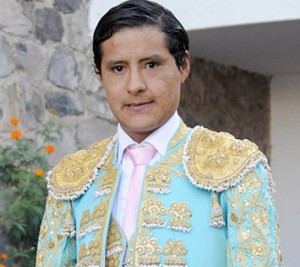The Revenge of the Proletariat: Cuadrillas Come Up Big in “Oportunidad” Final
In the 3rd, and final, of the so-called “Corridas de Oportunidad” offered by Casa Toreros for the summer season in Tijuana, it was the supporting cast, by and large, that came up big in the last of the “qualification” rounds for inclusion on the Cartel de Triunfadores, once scheduled for August 30, now delayed, perhaps, although for unspecified reasons.
The brothers Joaquin and Bernardo Hernandez, “Chivas”, and the banderilleros Fermin Quiroz and Jose Maria Aguilar gave a clinic on their respective crafts. Both Joaquin “Chivas” and Aguilar received warm applause following their interventions—something once almost unheard of in Tijuana, though it has happened twice this temporada.
The Nuevo Leon ganaderia of “El Vergel”, which sent the encierro run on July 5, once again impressed with a sextet of serious, well-armed (mostly) toros, all but 1 (“Rayito” run in 4th place) seemed to have easily passed their fourth year and two, “Pavito”, in 2nd place, and “Cachito” in 5th place, perhaps even five. The qualities required to face them were courage, solid taurine science, courage and courage, in that order.
Three of the four offered solid possibilities for the triumph that all of these toreros so desperately need, but, ironically, to have accessed those qualities, the toreros that faced them needed to have the security and technique that only experience can give.
What should have been more in evidence, however, and was not, was the desire to triumph at whatever the cost—technical errors and miscues can be forgiven in light of a no-holds barred attitude of “succeed or die trying”—which, in , might actually come to pass; such is the nature of the art. Only two of the toreros on the card this afternoon had the determination, the desire, and, to a greater or lesser degree, the technique/bull science to justify their inclusion in this corrda and project forward to the “Triunfadores” affair in…August? September? October?
With such bulls, the “seconds” take on a larger role in the management and care of the bull from the entry until the final sword thrust. In that regard, the cuadrillas did as much as they could (notable exception: the lidia to “Cachito” in 5th place, which was pathetically bad) to shape their respective matador’s bulls into something workable. Efforts which in most cases, went unnoticed and unappreciated…by their matadors.
Neither, Ocampo, Ibelles, Llaguno, or the young Lomelin demonstrated, not merely insufficient technique, but the desire to overcome any challenge and scale the next obstacle toward their goal of becoming “gente”. In Ocampo’s case, empathy might be justified for a very punished veteran who stood to gain little career-wise from a good performance. He attempted to torear as though the bull, “Sereno” by name, were simple and straightforward. Sereno”, like “Cachito” and later “Llovisnao”, had enough to offer, but one had to be skilled to get it.
No such tenderness can be offered to Ibelles, Llaguno, or Lomelin, who seemed like rank amateurs in some devilish reality show—where they failed to advance. Whether it was worse to keep trying, no matter the hopelessness—Ibelles—offering somewhat heroic poses and hoping that + good looks would pass as a triumph—Lomelin—or, simply refusing to even try—Llaguno (Llaguno???), is open to question, but on a day tailor made for bulls, sun, flies and the largest attendance so far for any of the three cards (some 4,000), these young matadors hurt their careers immeasurably.
The young Zacatecan Antonio Romero cut a well deserved ear from “Pavito”, one of the most serious toros to be seen in Tijuana in years.
“Pavito” had strength, duration, and a measured nobleza, or desire to charge at the most enticing lure rather than search around for other objects, which he did WHEN Romero stood his ground and demanded that he do so. That kind of courage is what separated the true toreros from those who were mostly modeling the sparkling suits. An excellent sword followed Romero’s determined, not brilliant, faena, and an ear was justly cut.

Angelino de Arriaga, the young Tlaxcalan, did show a steely determination to succeed regardless of the difficulties of his bull, the handsome black and white “Manchao”, who appeared as though he might have had a problem with the vision in his right eye.
Arriaga placed 3 good pairs of banderillas, and spent many minutes, on his knees, on foot, behind, beside, in front of the bull, who offered, barely, half-charges when he charged at all. A quick—not accurate—sword, brought the bull down and garnered Arriaga an ear that once again, he, not the crowd, was mostly instrumental in obtaining.
Special mention must be made of the picturesque, and efficient, work of the magnificent Charro team charged with removing the bulls from the ring following their deaths. This has been a recurring tragicomedy in the previous 4 corridas. The Charros, however, removed all six animals in less than 8 minutes, total. Certainly worth repeating in the Corrida de Triunfadores…and beyond.





